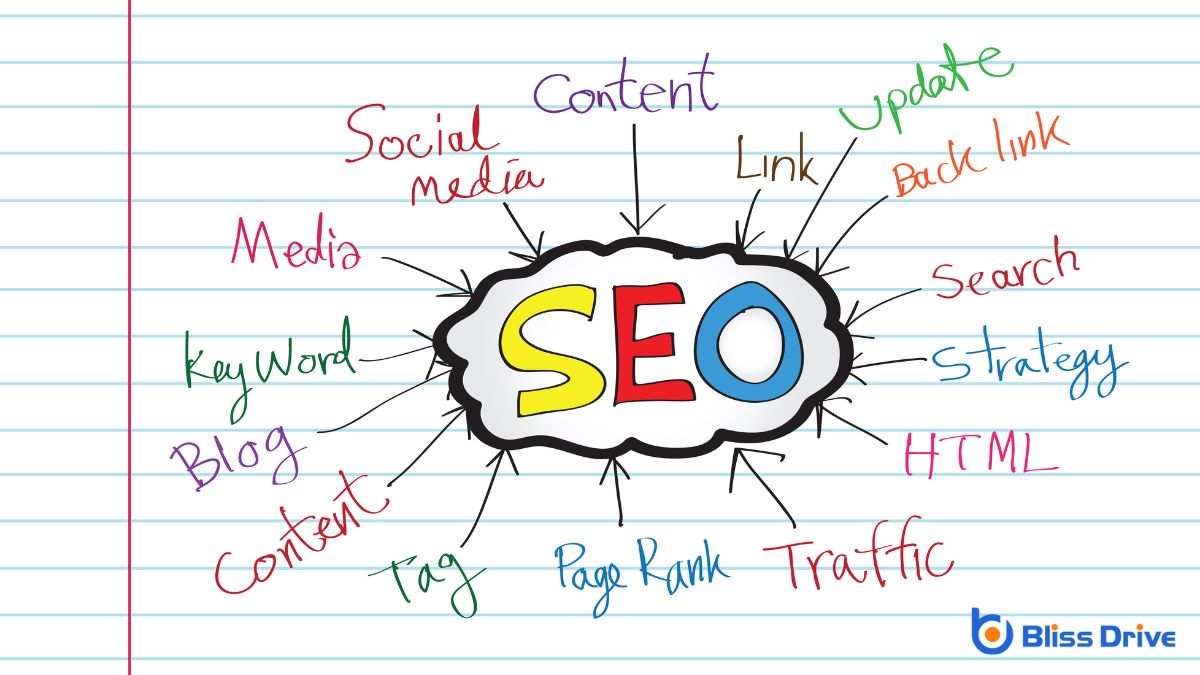Learn More About Us

You've probably heard that calls-to-action (CTAs) are vital for guiding users, but can too many of them actually hurt your SEO? Imagine a webpage cluttered with excessive CTAs—it's overwhelming, right? Search engines might see that as a red flag, impacting your rankingsThe position at which a website appears in the SERP.. Striking the right balance is key, but how do you do that effectively without sacrificing user engagementThe level of interaction and involvement users have with social media content. or SEO performance? Let's explore this delicate dance.

In web design, understanding the role of Calls to Action (CTAs) is fundamental for creating an engaging user experience. You need to guide visitors towards specific actions, like signing up for newsletters or making purchases.
CTAs act as signposts, directing users seamlessly through your website. It's essential to craft clear, compelling CTAs that align with your site's goals. You should focus on strategic placement and concise language to grab attention without overwhelming visitors.
Remember, your CTAs need to stand out visually yet fit naturally within your design. Test different variations to see what resonates best with your audience.
Ultimately, well-designed CTAs can enhance navigation and improve conversionThe completion of a desired action by a referred user, such as making a purchase or filling out a fo... rates, making them a significant component of effective web design.
You've learned how CTAs play an essential role in web design, guiding users toward desired actions. But it’s important to strike the right balance.
Too many CTAs can overwhelm and confuse visitors, making it tough for them to decide what to do next. You don’t want users to feel bombarded or frustrated because it might drive them away instead of encouraging engagementThe interactions that users have with a brand’s content on social media..
A well-placed CTA enhances user experience by providing clear, direct paths to follow. It’s about understanding your audience and offering them value without cluttering their journey.
When CTAs are relevant and meaningful, they build trust and help users navigate your site effortlessly. Remember, the goal is to leadA potential customer referred by an affiliate who has shown interest in the product or service but h... users smoothly, not to overwhelm them with choices. Keep it simple and purposeful.
While CTAs are essential for guiding user actions, overusing them can negatively impact your site's SEO. Search engines aim to deliver the best user experience by interpreting page content and structure. If they detect excessive CTAs, they may perceive your site as overly promotional, reducing its credibility. This can lead to lower rankings as search engines prioritize websites offering value and relevant information.
Also, too many CTAs can disrupt the natural flow of content, making it harder for search engines to understand your page's main focus. A cluttered layout filled with CTAs might signal a lack of coherent structure.
To effectively balance CTAs with content for ideal SEO, consider integrating them seamlessly into your content's natural flow. Guarantee each CTA feels like an organic extension of your message rather than a disruptive demand.
By weaving CTAs into your narrative, you maintain reader engagement and enhance user experience, both vital for SEO success.
Avoid bombarding readers with too many CTAs, as it can overwhelm and detract from your content’s value. Instead, focus on quality over quantity.
Prioritize CTAs that align with your content’s purpose and your audience’s needs. This strategic placement encourages user interactionAny action taken by a user on social media, such as likes, comments, shares, or retweets. without appearing overly pushy.
When placing CTAs effectively, consider your audience's natural reading path and how they interact with your content. Position CTAs where they make sense and are easily accessible, like near key information or at the end of a compelling paragraph.
You want them to flow seamlessly within the text, guiding users without disruption.
Keep in mind that clarity is vital. Use concise, action-oriented language that tells users exactly what to do. Instead of generic phrases like "Click Here," try "Download the Guide" or "Start Your Free Trial."
Visual elements also matter. Use contrasting colors to make CTAs stand out, but guarantee they align with your site's overall design.
Evaluating the effectiveness of your CTAs is essential to optimizing your website's performance. Start by tracking click-through rates (CTR) to see how often users engage with your CTAs. Use tools like Google AnalyticsA web analytics service offered by Google that tracks and reports website traffic. to monitor these metrics. High CTRs indicate that your CTAs are compelling and well-placed.
Next, assess conversion rates, which measure how many users complete the desired action after clicking a CTA. This might involve signing up for a newsletterA regularly distributed email containing news, updates, and content relevant to subscribers. or making a purchase. A/B testingA method of comparing two versions of a web page or app against each other to determine which one pe... can help you experiment with different CTA designs, placementsSpecific websites or locations within websites where ads can appear., and wording to find what resonates best with your audience.
Finally, gather user feedback through surveys or direct interactions. Understanding your audience's experience will provide insights into what works and what needs improvement.
After evaluating the effectiveness of your CTAs, it's important to recognize common pitfalls that can undermine both your calls to action and your SEO efforts.
One mistake is overloading your page with too many CTAs, which can confuse visitors and negatively affect user experience. Instead of guiding them, you might overwhelm them, causing them to leave your site.
Another trap is using generic language. Phrases like "click here" or "submit" don't provide clarity or motivation.
Also, neglecting mobile optimizationDesigning and formatting web content to ensure it performs well on mobile devices. can hurt your SEO. If your CTAs aren't mobile-friendly, you'll lose potential conversions.
Finally, failing to align CTAs with page content can disrupt the user journey. Make sure your CTAs are relevant and enhance the user's path to conversion.

To effectively harmonize your CTAs with SEO efforts, start by ensuring that every call to action is both strategically placed and contextually relevant. You want your CTAs to seamlessly blend with your content, guiding users without disrupting their experience.
Prioritize user intent: understand what your audience seeks and tailor CTAs to meet those needs. Avoid overwhelming them with too many choices—focus on a primary action that aligns with your SEO goals.
Craft compelling, clear language for your CTAs that encourages engagement. Use A/B testing to discover what resonates best with your audience.
Monitor results regularly to identify what works and what doesn’t. By maintaining a balanced approach, you’ll enhance user experience and boost your site’s SEO performance, driving sustainable growth.
To optimize your SEO, remember that less is often more with CTAs. Overloading your page with them can confuse visitors and negatively impact user experience, which search engines notice. Focus on seamlessly integrating CTAs into your content to guide users naturally without overwhelming them. Prioritize clarity and relevance to guarantee each CTA serves a purpose. By balancing CTAs with engaging content, you’ll enhance both your user experience and SEO performance. Keep it simple, and you’ll succeed!
